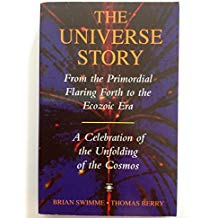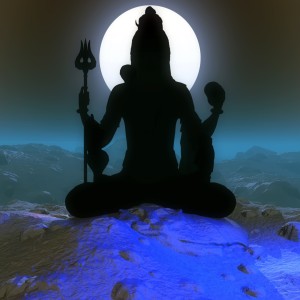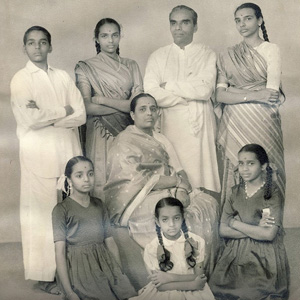 Life has existed and thrived on our planet for four billion years because somehow, embedded in the intelligence of the Universe, is the survival instinct. Whatever it takes, keep the evolutionary journey alive and moving towards more and more complexity. The Universe Story, a mind expanding book by two of my mentors, Thomas Berry and Brian Swimme, offers many examples of how threats to the continuation of life on Mother Earth were met with a tremendous burst of cosmic creativity and a leap in evolution. This is survival instinct acting as a collective intelligence, but each individual also has a biological survival instinct that manifests as both “I need to survive” and ‘the species needs to survive’.
Life has existed and thrived on our planet for four billion years because somehow, embedded in the intelligence of the Universe, is the survival instinct. Whatever it takes, keep the evolutionary journey alive and moving towards more and more complexity. The Universe Story, a mind expanding book by two of my mentors, Thomas Berry and Brian Swimme, offers many examples of how threats to the continuation of life on Mother Earth were met with a tremendous burst of cosmic creativity and a leap in evolution. This is survival instinct acting as a collective intelligence, but each individual also has a biological survival instinct that manifests as both “I need to survive” and ‘the species needs to survive’.
This survival instinct has served life well until the arrival of the human. Because evolution has provided humans with a whole new series of brain cells, leading to an emerging capacity for abstract thinking, we now can imagine and feel threats to our survival that are not based on real time physical ones. There are many ways this manifests. Unresolved stored trauma from the past can be triggered. A conceptual ‘me’, a self sense based totally on thought, can feel threatened by ‘them’ who disagree with my beliefs, or dress and talk differently, or whatever threats our imaginations can conger up. Or perhaps ‘they’ have something we think we need for our survival and we will do anything to get it. It gets even crazier when the collective human, expressed in culture, takes on this threat. Wars emerge.
The Universe, in its evolutionary wisdom, has provided an antidote to this pathological twist to the survival instinct by giving the human another instinct, the spiritual instinct. I first came across this, in different terminology and perspective, from B.K.S. Iyengar when he described the two traditional spiritual paths of Indian or Vedic culture. The first, the nivritti marga is the path of the sunnyasin or renunciate who chooses to leave the outer world  and devote their lives to the inner journey of transcendence. We might also call this the path of wisdom which is depicted in India by the image of Shiva sitting alone on a mountain top. In masculine dominant cultures, this is the only spiritual path. In traditional Vedic Culture, householders, after raising a family and participating in the community, often spend the last years of their lives as sunnyasin.
and devote their lives to the inner journey of transcendence. We might also call this the path of wisdom which is depicted in India by the image of Shiva sitting alone on a mountain top. In masculine dominant cultures, this is the only spiritual path. In traditional Vedic Culture, householders, after raising a family and participating in the community, often spend the last years of their lives as sunnyasin.
The second, the pravritti marga or path of the householder, who remains engaged in the world of time and space, can be called the path of the heart. It’s Vedic representation is Parvati, Shiva’s wife and the Divine Mother. Iyengar, a married man with six children, was on the pravrtti marga his entire life, and did not always receive respect as a spiritual teacher from the Indian  culture because he was not a sunnyasin. There has always been confusion about the spiritual validity of the householders path, and this is directly addressed in the definitive guide to yogic and Vedic wisdom, the Bhagavad Gita. Arjuna, the warrior, wants to walk away from the responsibilities life events have presented him and become a sunnyasin, as he feel that this is the true path to enlightenment. Krishna, both kindly and sternly points out that karma yoga, the yoga of action in the world, the pravritti marga, can very much be a Divine practice. For Arjuna, because he has karmic responsibilities to maintain dharma, (the spiritual integrity of Vedic culture), this is the only path for him. Iyengar knew this intuitively and poured his lifes’ energy into his practice and teaching.
culture because he was not a sunnyasin. There has always been confusion about the spiritual validity of the householders path, and this is directly addressed in the definitive guide to yogic and Vedic wisdom, the Bhagavad Gita. Arjuna, the warrior, wants to walk away from the responsibilities life events have presented him and become a sunnyasin, as he feel that this is the true path to enlightenment. Krishna, both kindly and sternly points out that karma yoga, the yoga of action in the world, the pravritti marga, can very much be a Divine practice. For Arjuna, because he has karmic responsibilities to maintain dharma, (the spiritual integrity of Vedic culture), this is the only path for him. Iyengar knew this intuitively and poured his lifes’ energy into his practice and teaching.
In esoteric Christianity, the pravritti marga is also the Jesus Story. In the Gospel of John, I-14, it is said ‘ and Spirit became flesh and dwelt among us.” Unfortunately the subtlety that we are all spirit made flesh and Jesus was only trying to point this out was totally missed by egoic consciousness. Exploring the Ultimate Mystery of incarnation is far more important to us than re-incarnation.
Lately, my spiritual mentor, Adyashanti, has been using the term ‘spiritual instinct’ to describe the same two paths, only he is really refining their meaning and application for our times. As Adya describes, our True Nature is the source of our spiritual instinct and it comes in two forms. The first is similar to the nivrtti marga, but instead of being a life style choice, like the sunnyasin, Adya calls this instinct a universal desire of True Nature to know itself, for the Ground of Being to become conscious of itself, through the human’s awakening. Another of my mentors, Thomas Berry, describes this his Twelve Principles of the Universe: “The human is that being in whom Universe attains reflexive consciousness of itself.” It is the human’s calling to journey inwards to the depths of Being.
The second expression of the spiritual instinct is for True Nature to continuously express its divinity and wholeness through action in the world of forms. This is an outward journey, from the depths of Being into creation, the Divine world of forms. We see this in the billions of years of amazing fecundity of the natural world and in the dazzling displays of the heavens, recently expanded to us with modern telescopes and space probes. In the human, it is similar to the pravrtti marga, where, as Krishna teaches Arjuna, action in the world can flow directly from the spiritual instinct of True Nature and thus be a spiritual path. Our lives are an expression of True Nature. However, as we all know, human action in the world usually flows from the survival instinct driven by the greed and ignorance of egoic consciousness. The path of yoga is designed to transform our lives back into harmony with our True Nature.
Because egoic consciousness’s can and will co-opt the spiritual instinct for its own purposes, it can and will use a spiritual practice such as yoga or meditation as a means to either gain something; freedom perhaps, but more often recognition, fame or power. Ego driven spiritual practice also usually wants to or to get rid unpleasant things so it can be comfortable. Arising from the ego’s sense of incompleteness that desperately and impossibly needs filling, these forms of ‘spiritual practice’ can have you spinning your wheels for years and decades.
A more subtle egoic intrusion is the judging of the quality of your meditation. Beginners really struggle with this, but it happens to all. From the ego’s perspective, there are good and bad days of practice. When relaxation and stillness seems to come easily, that is ‘good’ When your whole sitting practice is consumed with distraction or agitation, that is ‘bad’. The spiritual instinct has no judgment. Whatever arises is what arises. It is open to every possibility. Developing discrimination and knowing your underlying motivations is the key. Ask yourself, what are the yearnings that come from the deepest part of my Being? If there is judging, or wanting to acquire or avoid something, the ego is driving the bus.
In meditation we are called to listen deeply to our inner world, way down below the surface flow of thoughts, desires, emotions and images, and wait for our True Nature, through the spiritual instinct, to begin to reveal itself. Although ultimately totally mysterious, unbounded and ungraspable, we can feel its calling. It cannot be reached through will power or thought, but by letting go, moment by moment, until letting go becomes natural. Feel your heart softening and opening in this letting go. Impermanence is the natural state of the world of form. Allow it to be, without grasping or avoiding, and the deeper dimensions of stillness will begin to reveal themselves. Let your meditation be the natural expression of True Nature, not something you have to do.
When you are out in the world, see Divinity everywhere and feel you own moment to moment alive as Divinity expressing itself through you. Allow both aspects of your spiritual instinct flower. Let the survival instinct remain in the background, until life calls it forward. Then let your actions flow from both wisdom and love.
For some further insight, check out the Voices of Awakening Page on this website.

